Pete’s Gear: Fender Pro amp ‘head’
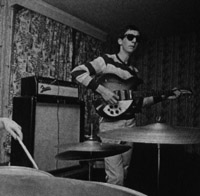
Click to view larger version. Ca. August/September 1964, at the Railway Hotel, Fender Pro head on top of early Marshall 4×12. Guitar is Rose Morris, Co. LTD., Rickenbacker 1998 fitted with trapeze tailpiece from Gibson EDS-175.
Pete Townshend used a Fender Pro “head” in 1964 and 1965 on stage and in the studio.
This amp appears to be a 1962 or 1963 G65-A brown-era Fender Pro amp, which was cut down and resized to “head” size and recovered in black tolex. This work was likely done by Jim Marshall’s music shop (J&T Marshall Musical Instruments, LTD, a music shop in Uxbridge Road, Hanwell, West London), or may have been done by Pete himself.
Lee Phillips, guitarist for the Detroit-area band the Illusion, which opened for the Who at the Grande Ballroom, recalls Pete telling him that he had cut the cabinet himself.
Pete purchased a Fender Pro combo with 1×15 JBL speaker from John McLaughlin at Selmers music shop around 1962 or 1963, which he used extensively up through the High Numbers era. It is therefore likely that it was this original combo that was modified for use as the top.
Specification
The G65-A Fender Pro amp was 40 watts and featured Fender’s 12AX7-based Tremolo vibrato effect and an 8-ohm output transformer. (Note: It is unknown whether there were modifications made to the amp or the early Celestion G12-loaded Marshall 4×12 cabinet Pete used with this amp, since the Marshall would have likely had a 15-ohm input and the Pro had an 8-ohm output.)
Controls
- Two inputs (normal)
- Volume
- Treble
- Bass
- Two inputs (vibrato)
- Volume
- Treble
- Bass
- Speed
- Intensity
- Presence
Cosmetics
- Brown round knobs
- Brown-era control configuration (with Presence control at right)
Case details
- Appears to be 8″×24″ case dimension.
- No corner hardware
- Chassis straps intact
- Flat, chrome and black script Fender logo
- Black tolex
- Grille cloth appears to be either wheat or silver sparkle.
Selected quotes from Pete Townshend
All quotes and references are copyright their original owners and are included for reference only.
From April 1980 issue of Sound International article, courtesy Joe G’s site.
I had Fender amps, a Fender Pro and a Fender Bassman and two 4 × 12s. Each one didn’t drive its own speakers, it drove those two Marshall 4 × 12 cabinets. And I kept that set-up for a long time.
Guitar Player, October 1989
I never, ever used a stack with one amplifier until I got into Hiwatts, and I didn’t use Marshalls very long. In fact, I never used Marshall in the beginning at all. I used to use Fenders; I had a Fender Pro and a Fender Vibrasonic and a Fender Bassman top, and I used to drive Marshall 4×12’s with those amplifiers. I thought Marshalls were awful, and I’m afraid I still do, although that’s just a personal opinion. I don’t mean it’s bad stuff: I just mean I didn’t like the sound. And when I heard Hiwatt I was over the moon, because they sounded to me much more like a really good, top-line mid-’60s Fender amp. I still think it’s hard to beat Fender amps; they’re astonishing.
Guitarist, August 1994
“Johnny McLaughlin [yes, that one] had sold me my first Fender amp — a Pro — when he worked at Selmers, and it was a really great buy. I eventually took the Fender Pro and a Bassman head to Jim Marshall and said, I want this sound but I want it 10 times louder.”
From May 2002 interview with Guitar Center
“A few years later I bought my own first Fender amp — a Fender Pro with a 15″ JBL. John McLaughlin sold it to me. I was a Steve Cropper fan, and getting his sound was my main aim. JBLs were legendary then. There were other good speakers, but JBLs looked good, and sounded extraordinary. The treble penetration was so good.”
From Before I Get Old
At the Oldfield, Townshend sometimes placed his amp on an unused piano at the back of the stage. When he switched to Rickenbacker guitars in late 1963, he began placing the amp at the same height as the guitar’s single-coil pickup, causing electroacoustic feedback.
“The Yardbirds, funnily enough, were the reason I hit upon it,” Townshend told Paul Nelson in 1968. “When I was at school, I lived with this guy who used to go and see Eric Clapton. And he would come back saying, ‘Look, you’ve got to do this! Eric Clapton does this great thing where he goes ba-ba-ba-bam on the guitar for hours and hours and everyone goes crazy and lights flash on and off and it’s great, it’s great.’ So I used to go ba-ba-ba-bam and attempt to do this from what I’d heard from him. Luckily enough, the influence, which could have been very obvious and direct if I’d actually gone to see Clapton was very effective coming secondhand.
“I used to play at this place where I put my amp on the piano, so the speaker was right opposite my guitar. One day, I was hitting this note and I was going ba-ba-bam and the amplifier was going u-ur-ur-ur on its own. I said to myself, ‘That’s fun. I’ll fool around with that.’ And I started to pretend I was an airplane. Everyone went completely crazy.
“I started to use it, I started to control it. I regulated the guitar so that the middle pickup was preamped on the inside with a battery and raised right onto the strings so that it would feed back as soon as I switched it on. And I could control it and go through all kinds of things.”
Entwistle and Townshend soon after started stacking their amplifiers, with their huge four-by-twelve speaker cabinets. (Townshend at first used to place his amp on a chair to locate the feedback.) “An electric guitar is really a guitar and a microphone,” said Roger. “Pete used the microphone part instead of the fretboard. He wasn’t interested in the technical qualities — he’d use it in a completely different way than [Jeff] Beck or [Jimi] Hendrix. He’d just bang it.”
Pete via Instagram post on 29 Oct. 2019:
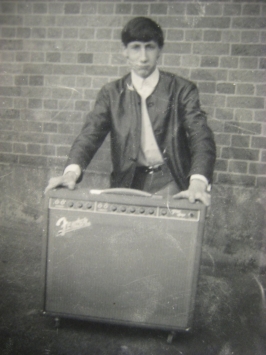
Click to view larger version. Ca. 1963, as the Detours, Pete posing with the uncut Fender Pro 1×15. (h/t: Rudy and Wallace)
This is me at about 17 years old with the first Fender amp I ever owned. I wanted to sound like Steve Cropper on BOOKER T AND THE MG’S “Green Onions”. At this time I was still using an Epiphone Coronet that Roger lent to me in 1962 when I took over lead guitar from him. The amp was recommended and sold to me by Johnny McLaughlin who was working as a part-time salesman and guitar demonstrator at Selmer’s Music Store on Charing Cross Road in London.
This rig, with no stomps, gave me exactly the sound I needed for that one tune, but wasn’t really distorted enough for the rest of our R&B set. This amp went on to be used to drive my first Marshall 4 × 12 speaker cabinet. That was around mid 64.
On the current Who tour I tried a Coronet on “Behind Blue Eyes” and it really sang. But I need to equip one with the piezo bridge pickup I like to combine with the regular pickups.
That said, I’m buying the one in the photo to take home from Southside Guitars in Brooklyn. I have a new Vibroverb amp which will make the same sound. Like glass!!! I designed the leather band jackets for the band, we were then called the Detours. The general consensus was that they made us look like dustmen. (Garbage Collectors). I look adorable. Let’s face it. I was all set to marry the prettiest girl at art school. Heartbreaker I was.
In the photos below, the amp is driving an original Celestion G12-loaded Marshall 4×12 cabinet mounted on a stand.
Photo Gallery
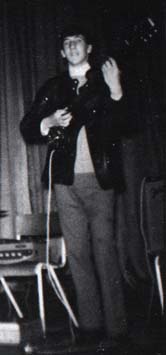
Ca. 1963 as the Detours, Pete with Epiphone Wilshire, playing through what appears to be the original Fender Pro 1×15.
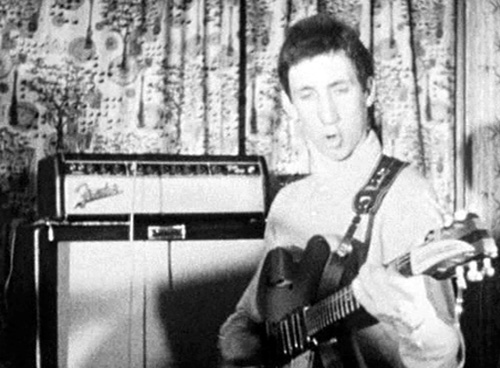
Ca. August/September 1964, at the Railway Hotel, Fender Pro head on top of early Marshall 4×12.
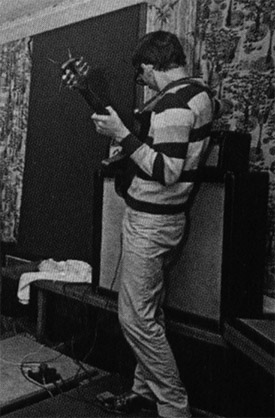
Ca. August/September 1964, at the Railway Hotel, Fender Pro head on top of early Marshall 4×12.
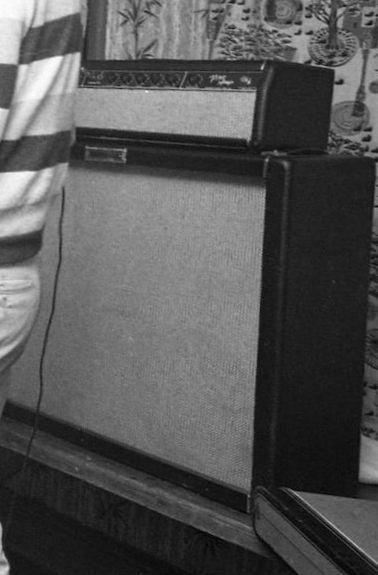
Ca. August/September 1964, at the Railway Hotel, closeup of the Fender Pro “head” and the early Marshall 4×12.
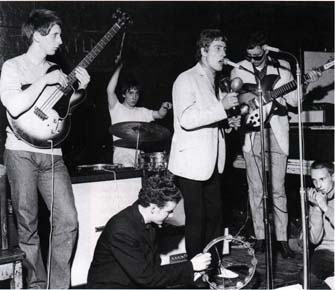
22 July 1964 at the Scene Club, Pete plays through the Fender Pro “head” and the early Marshall 4×12. Guitar is Rose Morris, Co. LTD., Rickenbacker 1998 fitted with trapeze tailpiece from Gibson EDS-175.
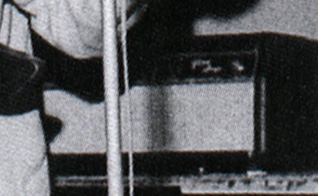
Closeup of the Fender Pro “head” from the above High Numbers photo.
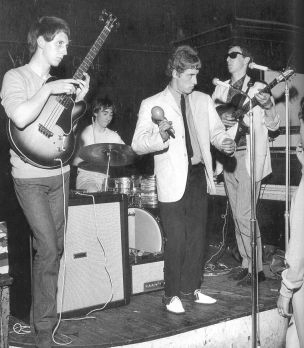
22 July 1964, Pete plays through the Fender Pro “head” and the early Marshall 4×12. Guitar is Rose Morris, Co. LTD., Rickenbacker 1998 fitted with trapeze tailpiece from Gibson EDS-175.
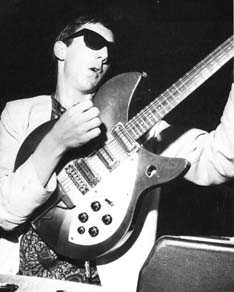
Side view of same 22 July 1964 Scene Club gig, with side of Fender Pro head visible, showing tolex detail.
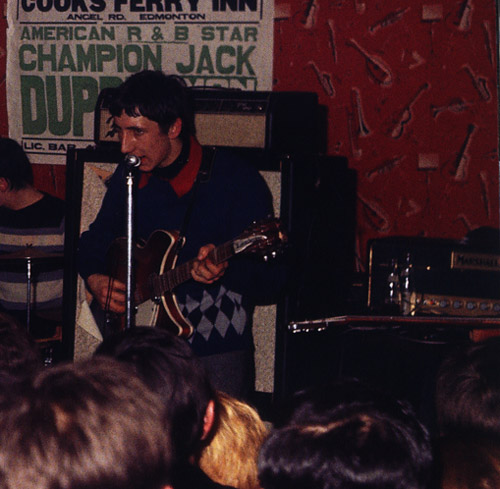
25 March 1965, at Blueopera R&B Club in Edmonton, North London, with Fender Pro head on top of single Marshall 4×12 on stand (with torn speaker grille cloth). Guitar is Rickenbacker 360/12 Export 12-string, with 1997 or 1998 6-string at right on table. (Marshall amp in back is likely another group’s.)
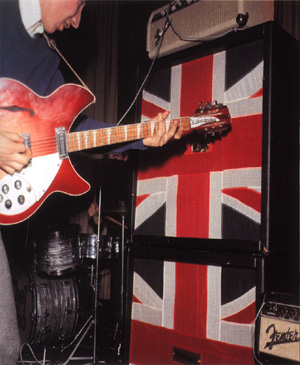
Click to view larger version. Ca. March 1965, grinding a 1964 Rickenbacker 360/12 Export into an early “stack” of Marshall 4×12 cabinets powered by a Fender Bassman atop the stack, which is daisy-chained to the custom Fender Pro head at lower right.
Resources and Information
For more information about the Fender Pro amplifier, see:
- Fender Field Guide: ampwares.com/amplifiers/fender-brownface-pro/.
- Guitarium and Ampeteria (1961 Fender Pro G65-A): ggjaguar.com/pro.htm
- Vintage Amps Bulletin Board: vintageamps.com/plexiboard/viewforum.php?f=8 (archived)